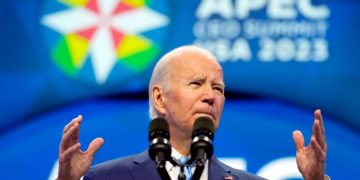As traders returned from the Labor Day respite, they were greeted not with fanfare, but with a market maelstrom. September 3rd unfurled as a day of reckoning for the U.S. stock market, with the triumvirate of major indices—the S&P 500, the Nasdaq, and the Dow Jones Industrial Average—plunging to their steepest single-day declines since August 5th. The volatility index, often dubbed the “fear gauge,” surged a staggering 33.2% to 20.72, marking its most significant single-day leap and the highest close since the early days of August. The Dow tumbled 626.15 points to 40936.93, a fall of 1.51%, slipping beneath the 41000 threshold; the S&P 500 shed 119.47 points to 5528.93, down 2.12%; and the Nasdaq plummeted 577.33 points to 17136.30, a precipitous drop of 3.26%.
Tech stocks led the nosedive, with Nvidia’s near 10% fall dragging down the semiconductor index by over 7.7%. Energy and communication sectors were also among the hardest hit. Nvidia, a bellwether for U.S. tech stocks, saw its market value evaporate by approximately $279 billion, marking one of the most substantial single-day market value losses in the annals of U.S. stock market history. Giants like Amazon, Apple, and Microsoft were not spared, closing down 1.26%, 2.72%, and 1.85%, respectively.
Nvidia, the vanguard of American tech stocks, has been under relentless bearish pressure. Despite outperforming Wall Street’s expectations for its second-quarter revenue and profits, the lack of a positive surprise, coupled with figures falling short of the most optimistic forecasts, caused its stock to plummet by 8%. Further exacerbating investor trepidation, Bloomberg reported that the U.S. Department of Justice had issued subpoenas to Nvidia and several third parties in search of evidence for antitrust violations, sending Nvidia’s stock into a tailspin.

The specter of the September “curse” looms large over traders, with the month historically being a harbinger of poor performance for U.S. stocks. The recent economic data and adjustments in the Federal Reserve’s monetary policy add layers of uncertainty to September’s trajectory.
On the data front, consecutive releases of disappointing U.S. manufacturing figures have reignited concerns over a potential slowdown in economic growth, serving as a catalyst for the market’s downturn. Specifically, the U.S. August ISM Manufacturing PMI edged up to 47.2 from a nadir in August, slightly above July’s 46.8, yet remained below the 50 threshold indicative of a contracting manufacturing sector.
Moreover, the S&P Global Manufacturing PMI revealed that the U.S. manufacturing sector’s final figure for August stood at 47.9, below the initial estimate of 48 and July’s final figure of 49.6, persisting in contraction territory. Chief Business Economist Williamson at S&P Global Market Intelligence interprets the further decline in PMI as a sign of manufacturing’s increased drag on the U.S. economy in mid-Q3, with leading indicators suggesting this drag may intensify in the coming months.
Following the release of the manufacturing PMI data, market sentiment has heightened expectations of a 50 basis point rate cut by the Federal Reserve in September. After Fed Chair Powell announced at the Jackson Hole symposium that the time for policy adjustment had come, U.S. stocks experienced a temporary surge. Now, all eyes are on the impending September Fed meeting for further cues.
Before the Fed’s policy meeting, however, the U.S. stock market faces the critical challenge of the impending release of the U.S. August non-farm payroll data. Analysts at Bank of America suggest that if the data exceeds expectations, an overheated jobs report could prompt the market to reassess the Fed’s rate cut magnitude for the year.
Economists at Bank of America anticipate only two 25 basis point rate cuts from the Fed this year. A robust rebound from a weak July jobs report could shift market sentiment and prove that investors have been overly confident in the Fed’s rate cut trajectory, potentially placing downward pressure on U.S. stocks.
Key economic data releases in the near term have the potential to influence the Fed’s rate cut magnitude, thereby affecting market sentiment. In the short run, U.S. stock performance is likely to revolve around U.S. economic data and the Fed’s monetary policy direction until the “boot” of the September Fed decision drops.


































